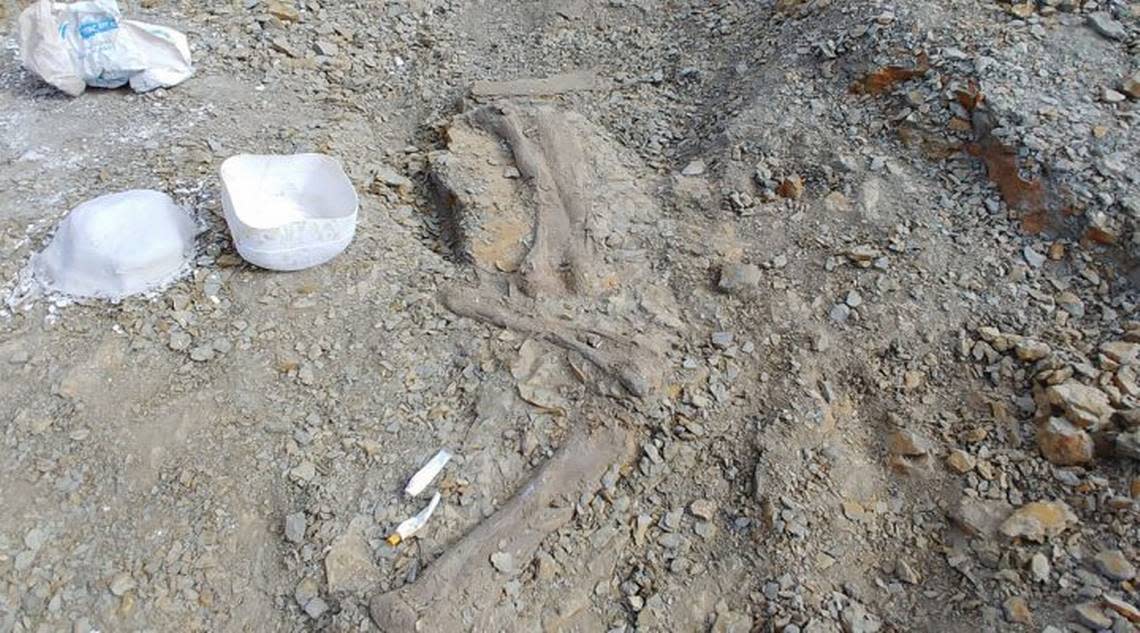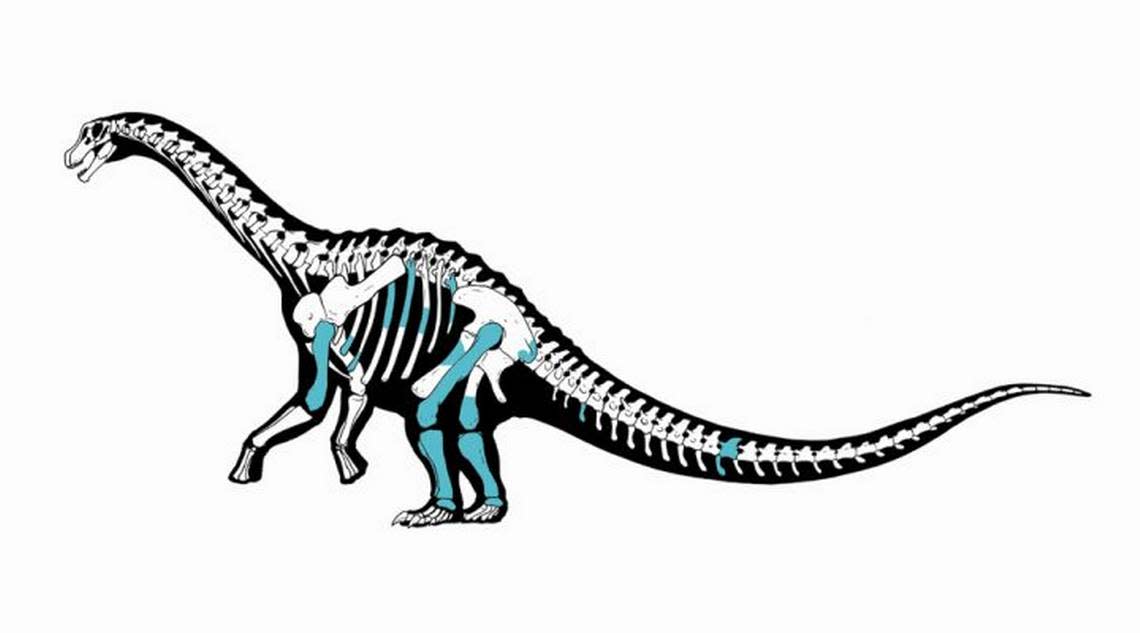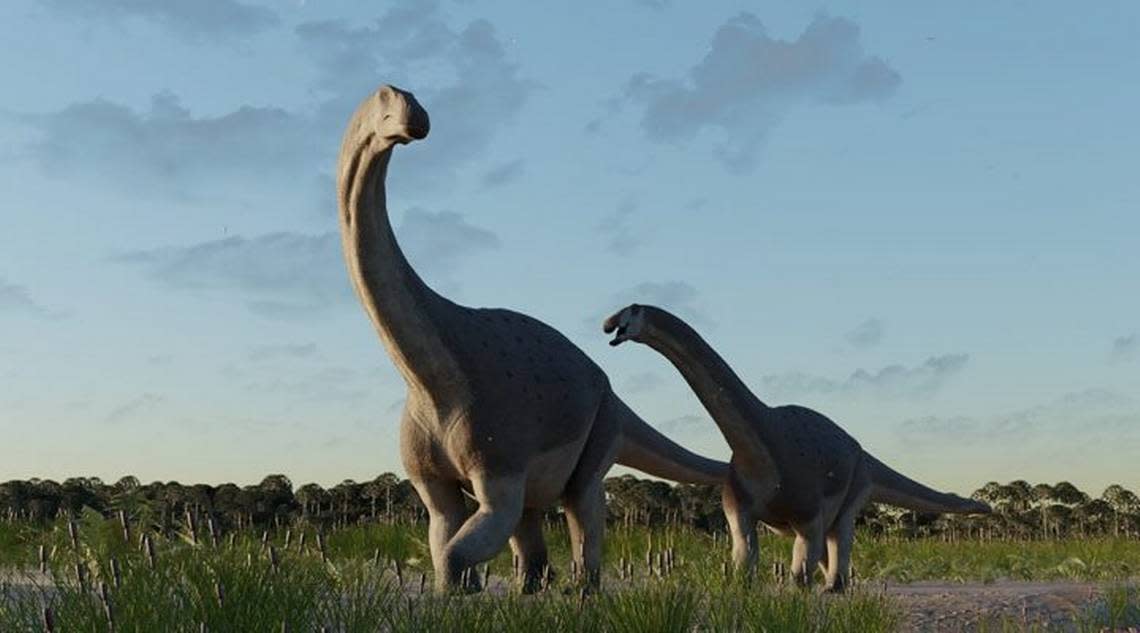Bones of prehistoric ‘titan’ discovered in Argentina — but it may be smallest ever
Millions of years ago, the dinosaurs that dominated the planet came in all shapes and sizes.
The tyrannosaurus was a nearly 40-foot-long apex predator. Shuvuuia, on the other side of the size scale, was a 2-foot-tall theropod, not much taller than a human’s knee.
They both lived in the Late Cretaceous period but were dwarfed by the true giants of their time: titanosaurs.
That is what paleontologists thought they were looking at when bones emerged from the stone at the La Colonia Formation in the Patagonia region of Argentina.
The research team, from the National Council for Scientific and Technical Research of Argentina (CONICET), slowly chipped away the stone from fossilized forelimbs, hindlimbs, rib fragments and pieces of vertebrae, according to an April 11 news release from National Geographic, which funded the study.

Discover more new species
Thousands of new species are found each year. Here are three of our most eye-catching stories from the past week.
→Deep-sea creature — with yellowy tentacles and over 80 feet — is new species
→Reddish sea creature — with over 70 feet — found by a submarine
→Spiky 'dwarf'-like creature found at abandoned building in India
Using the bone fragments, the paleontologists could estimate the size of the dinosaur and date the age of the bones, they said in a study published April 11 in the journal Historical Biology.
The bones were similar to other titanosaurs, a group of sauropod dinosaurs with four legs and long necks that were some of the largest dinosaurs that ever lived, and were dated to the correct period, about 70 million years ago.
But while the dinosaur family was the same, the species didn’t measure up to its known cousins.
Using the length of the tibia and fibula fossils, the researchers were able to predict the total size of the titanosaur — at just 6 feet tall.
The dinosaur, called Titanomachya gimenezi, was a completely new species, and is the first sauropod discovery at the La Colonia Formation.
“It is also the smallest known titanosaur from central Patagonia having weighed an estimated 7 tons — about 10 times smaller than its giant titanosaur counterparts,” according to National Geographic.

Patagotitan mayorum, another titanosaur found in the same region, had an estimated length of about 130 feet, researchers said in a CONICET news release, and may have weighed as much as 70 tons, a true giant.
T. gimenezi, on the other hand, was not much taller than a modern-day cow.
That may be due to the period during which it lived, National Geographic said.
The dinosaur existed in the last age of the Cretaceous period known as Maastrichtian, researchers said in the CONICET release.
The area was mainly made up of estuaries and lagoons and home to a variety of trees, aquatic plants and flowers, according to the release.
“The discovery of Titanomachya adds to previous data suggesting there was a major ecological change as the Cretaceous (Period) was coming to an end, marked by the downsizing of titanosaurs, a decrease in their abundance, and the predominance of other herbivorous dinosaurs, such as hadrosaurs on the landscape,” National Geographic explorer Diego Pol said in the release.

The new species also expands the evolutionary understanding of the group of titans, after a piece of bone from the ankle, the astragalus, was discovered with a structure researchers hadn’t seen before.
The shape of the talus, a bone that distributes weight from the bottom of the leg onto the inside of the foot, was also different than any other discovered so far, researchers said in the CONICET release, meaning the new species could help paleontologists understand the progression of titanosaurs from towering giants to average prehistoric reptiles.
The dinosaur was discovered in La Colonia Formation in northern Chubut Province in southern Argentina.
Google Translate was used to translate the news release from the National Council for Scientific and Technical Research of Argentina.
‘Ghostly’ creature — named after Harry Potter villain — discovered underground. See it
Clawed creature falls from tree and lands on scientist in Thailand. It’s a new species
‘Warrior’ creature — with ‘dark mark’ — found as new species in Brazil river. See it
‘Unusual’ creature — with ultrasonic song — escapes its cage. It’s a new species
